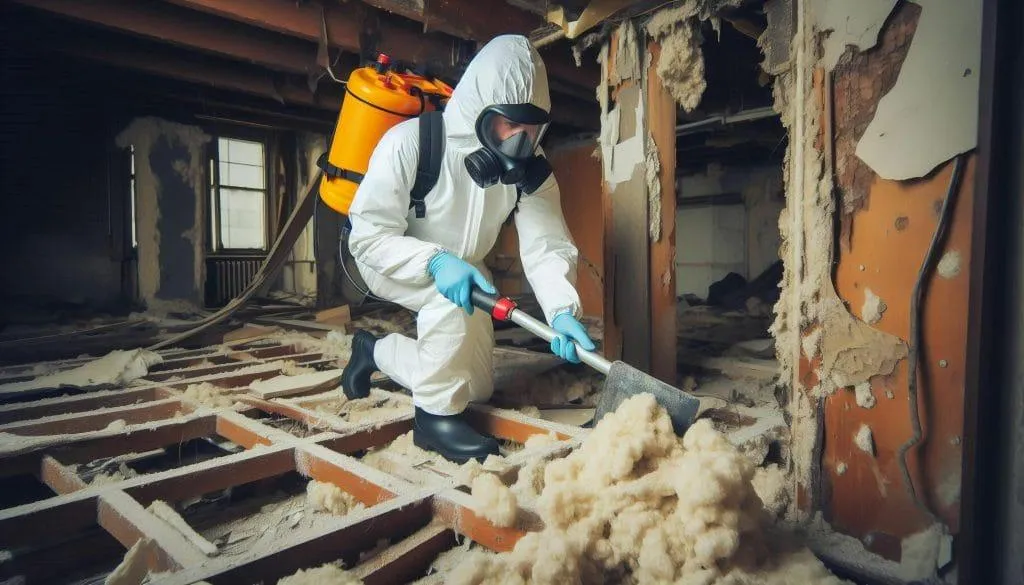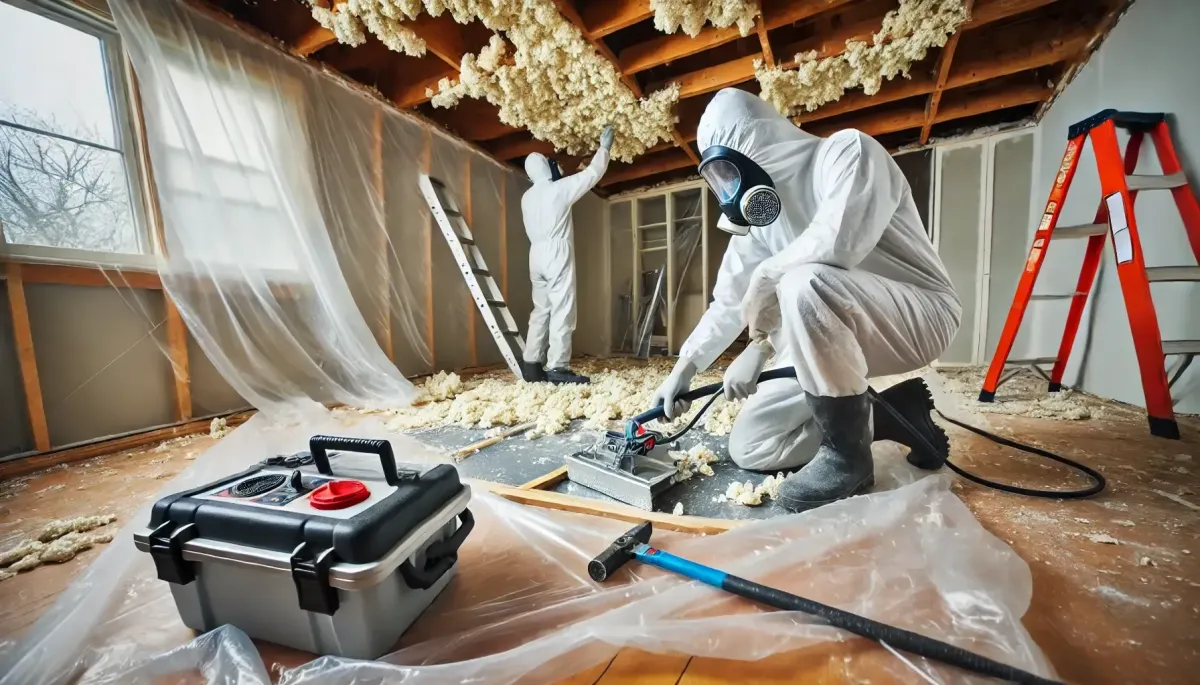
Comprehensive Asbestos Air Monitoring Services in Denver, CO: Testing, Inspection, and Safety Solutions
Asbestos air monitoring in Denver ensures indoor air remains free of hazardous fibers. With diverse building stock and strict regulatory demands, these services protect occupants during renovation and demolition while supporting safety and compliance. This article details processes, qualifications, inspection services, risk assessments, cost considerations, and complementary services in Denver.
What Is Asbestos Air Monitoring and Why Is It Essential in Denver?
Asbestos air monitoring involves systematic air sampling and analysis to detect fibers before, during, and after abatement. It protects indoor air quality by identifying any fiber release that could harm occupants or workers.
How Does Asbestos Air Monitoring Protect Indoor Air Quality?
It detects airborne asbestos fibers from disturbed materials, triggering immediate corrective measures. Continuous testing ensures any residual contamination is promptly remediated.
What Are the Health Risks of Asbestos Exposure in Denver Homes and Businesses?
Exposure can cause severe respiratory conditions such as lung cancer, mesothelioma, and asbestosis. Routine monitoring minimizes long-term risks by keeping fiber levels safely below established limits.
Which Regulations Govern Asbestos Air Monitoring in Denver, CO?
Federal (OSHA, EPA) and local regulations drive Denver’s monitoring standards. These requirements set acceptable fiber limits and mandate that certified professionals perform testing, protecting public health and shielding property owners from legal penalties.
How Do Certified Asbestos Professionals Conduct Air Monitoring in Denver?
Certified professionals follow stringent protocols to ensure accurate, reliable results. Their expertise helps interpret complex environmental conditions and properly apply abatement techniques.
What Qualifications Define Certified Asbestos Inspectors in Denver?
Inspectors complete rigorous training and adhere to state and federal certification standards. Their specialized knowledge in sampling methodologies and laboratory analysis guarantees that monitoring meets or exceeds regulatory requirements.
How Is Air Sampling Performed Before, During, and After Asbestos Removal?
Air sampling occurs in three phases: before abatement (to establish a baseline), during removal (to monitor changes), and after abatement (for clearance testing). Each phase employs controlled sampling and standardized analysis to ensure safe fiber levels.
What Equipment and Techniques Are Used for Accurate Asbestos Testing?
High-precision instruments like phase contrast and transmission electron microscopes, combined with advanced sampling pumps and certified filters, ensure testing is accurate and reproducible under various conditions.
What Are the Key Types of Asbestos Air Monitoring Services Offered in Denver?
Denver services are tailored for property owners, contractors, and government agencies. They cover all phases of abatement projects to maintain public health and compliance.
What Is Pre-Abatement Air Monitoring and Why Is It Important?
Pre-abatement monitoring assesses baseline asbestos levels before any disturbance, providing a reference point to measure the impact of remediation. This data informs safe work practices and ensures initial conditions meet standards.
How Does During-Abatement Air Monitoring Ensure Worker and Public Safety?
Real-time monitoring during removal detects any sudden increases in fiber concentrations. Prompt adjustments and containment measures protect workers and nearby occupants throughout the process.
What Does Post-Abatement Air Monitoring Involve for Clearance Testing?
Post-abatement clearance testing confirms that remediation has reduced fiber levels to regulatory standards, certifying the property as safe for re-entry and continued occupancy.
How Is an Asbestos Risk Assessment Conducted in Denver Properties?
Risk assessments in Denver analyze building materials, current conditions, and potential disturbances. They identify both immediate and long-term risks, guiding subsequent monitoring and remediation strategies.
What Factors Are Evaluated During an Asbestos Risk Assessment?
Assessments consider the age and condition of building materials, likelihood of disturbance, prior abatement history, and the presence of other contaminants. Environmental conditions such as airflow and humidity also impact the potential fiber release.
How Do Risk Assessments Influence Air Monitoring Strategies?
The results determine the frequency and design of air monitoring protocols. Higher-risk properties may require intensive sampling and stricter containment, while lower-risk properties follow standard procedures.
When Should Property Owners Schedule an Asbestos Risk Assessment?
Risk assessments should be scheduled before renovations, demolitions, or significant maintenance and regularly for older buildings as part of proactive maintenance.
How to Choose the Best Asbestos Inspection Company in Denver, CO?
Selecting an inspection company requires evaluating certification, experience, and customer testimonials to ensure accuracy and compliance.
What Questions Should You Ask Certified Asbestos Professionals?
Ask about their certifications, experience, and references. Inquire about sampling methods, laboratory analysis, timelines, and documentation that confirms adherence to local and federal standards.
How Do Turnaround Times and Reporting Impact Service Quality?
Efficient turnaround for sampling, analysis, and reporting indicates quality. Detailed reports with findings, incident logs, and recommendations help ensure timely remediation.
What Are the Benefits of Working With Local Denver Air Quality Experts?
Local experts understand Denver’s regulatory landscape and environmental conditions. Their tailored solutions and prompt service lead to more accurate assessments and effective remediation recommendations.
How Does Indoor Air Quality Monitoring Complement Asbestos Testing in Denver?
Indoor air quality monitoring supplements asbestos testing by continuously evaluating overall environmental conditions and ensuring the air remains healthy.
What Other Contaminants Are Monitored Alongside Asbestos?
Monitoring may include radon, VOCs, bacteria, mold, and particulates. This comprehensive approach helps safeguard against a variety of indoor air hazards.
How Can Indoor Air Quality Monitoring Improve Long-Term Safety?
Continuous monitoring detects spikes in contaminants early, allowing for prompt interventions. Data trends over time help optimize maintenance schedules and overall air quality management.
What Technologies Support Continuous Air Quality Monitoring?
Technologies including real-time sensors, IoT systems, and automated data loggers provide immediate alerts and long-term data to support proactive safety measures and regulatory compliance.
What Are the Costs and Benefits of Professional Asbestos Air Monitoring in Denver?
Professional monitoring is an investment in long-term health and compliance. While costs vary, the benefits include avoiding health hazards and reducing non-compliance fines.
How Are Asbestos Air Monitoring Services Priced in Denver?
Pricing depends on the scope of work, sampling phases, project size, and reporting complexity. Standard pricing tiers apply, while custom solutions may incur additional fees.
What Long-Term Savings Result From Early Detection and Monitoring?
Early detection can prevent costly remedial actions, legal liabilities, and health care expenses related to asbestos diseases. Regular monitoring minimizes downtime in commercial properties and may improve property values.
Are There Any Financial Assistance or Compliance Incentives Available?
Denver property owners may access state or federal grants, tax credits, and low-interest financing to offset monitoring and remediation costs.
Final Thoughts
Denver’s asbestos air monitoring services are vital for public health and regulatory compliance. Certified professionals rigorously test and manage asbestos risks before, during, and after abatement. Property owners benefit from detailed risk assessments and cost-effective detection processes that mitigate long-term hazards. By partnering with local experts, stakeholders secure a safer indoor environment.

What is asbestos air monitoring?
It is the process of testing indoor air for asbestos fibers to detect and prevent hazardous exposure during and after abatement.
How often should a risk assessment be conducted?
It should be scheduled before renovations and regularly for older properties to ensure compliance.
What certifications do Denver asbestos inspectors require?
Inspectors must meet state and federal training and certification standards to ensure proficiency in sampling and analysis.

Can indoor air quality monitoring detect contaminants other than asbestos?
Yes, it also monitors radon, VOCs, mold, and other pollutants to provide comprehensive air quality data.
Are there financial incentives for asbestos monitoring services in Denver?
Incentives such as grants, tax credits, and low-interest financing may be available to offset monitoring and remediation costs.
Address: 13340 Harrison Street, Thornton, CO 80241
Phone: 720-571-8481
Email: [email protected]
